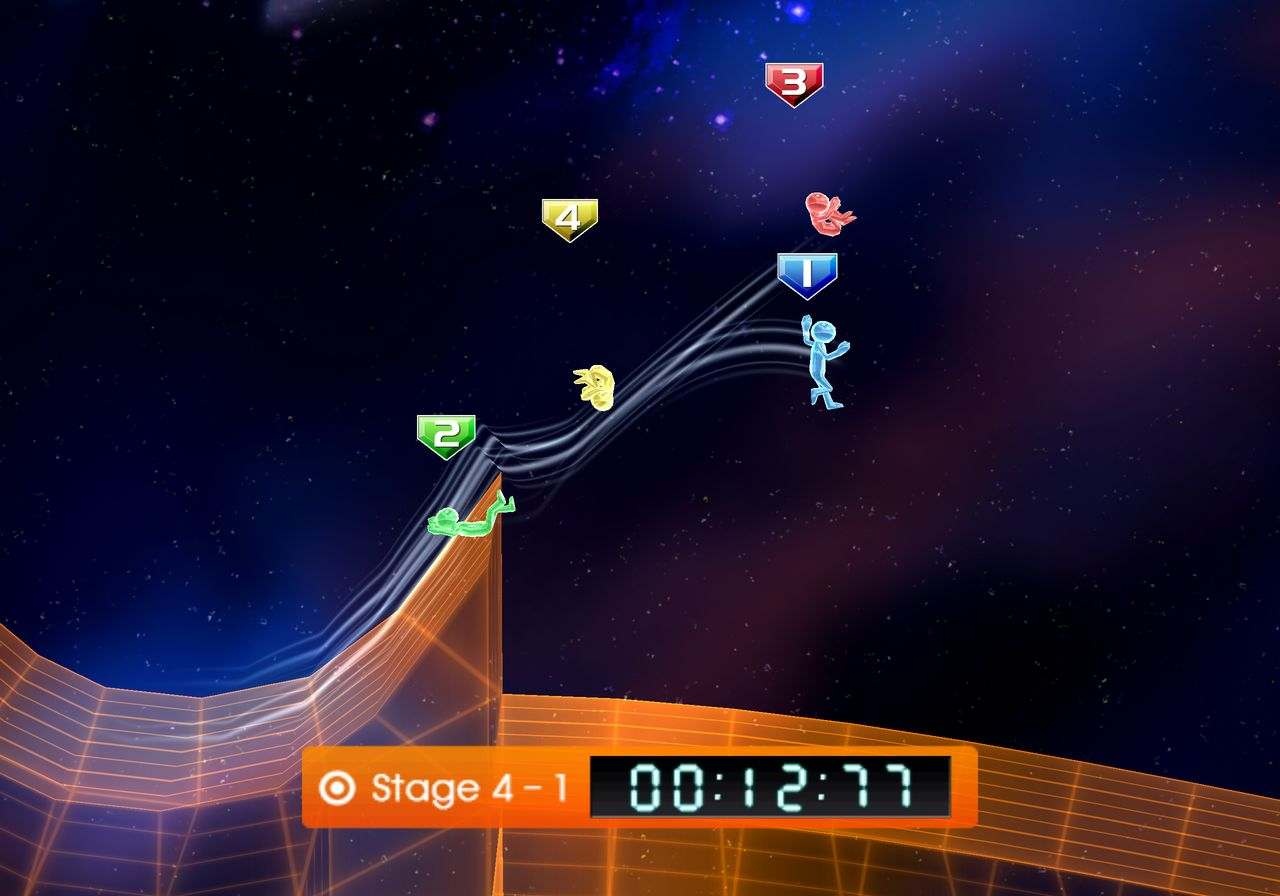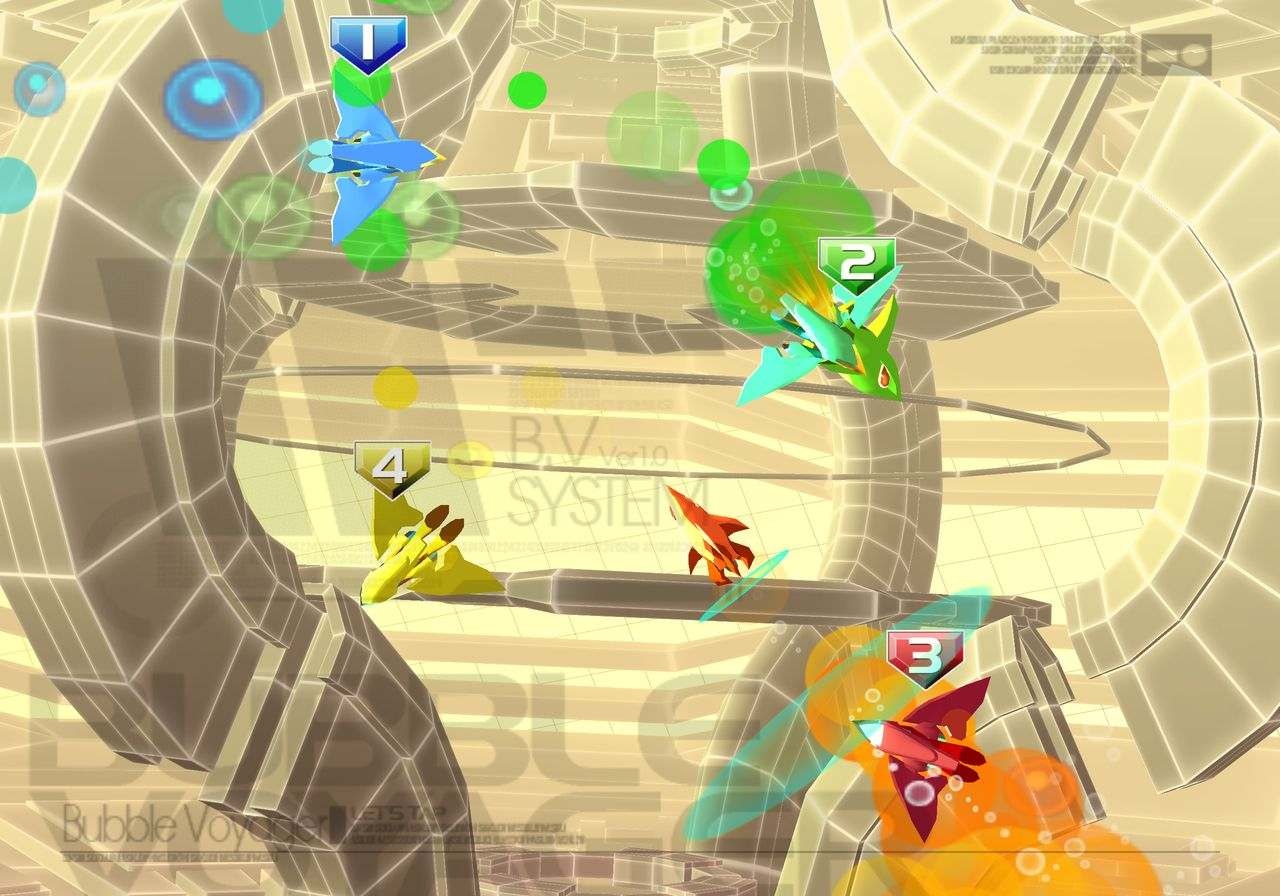Motion controls have been employed in a lot of interesting and effective ways since the Wii's arrival in 2006. However, they've never been used in quite as unusual a fashion as they are in the party game Let's Tap. Rather than hold the Wii Remote in your hands, you place it face-down on a cardboard box (or similar surface), and then tap on the box to interact with the game. While there's not much variety, it's ultimately a fun and refreshing budget-priced experience for up to four friends.
Let's Tap has a great tutorial that helps you come to grips with its unique, and surprisingly effective, control scheme. All you need to do is find a suitable object, such as a cardboard tissue box, and then flip the remote upside down and place it on the box. The remote is surprisingly sensitive to even minor vibrations, so you don't have to tap the box very hard to register a response. You can navigate menus by pointing at the screen, but by and large you interact with Let's Tap solely through single and double taps on the box. Considering that the game uses the remote in a way perhaps not intended, it's great to see this control scheme work without fault.
The collection includes five very different games: running races, a rhythm game, a block puzzler, a 2D side-scrolling shooter, and an abstract drawing mode. The Tap Runner racing game is the best of the bunch, thanks to the amount of variety, challenge, and enjoyment it offers, and tapping your way to the finish line offers plenty of amusement. You run by tapping your box lightly, and you jump obstacles by tapping with more force. There are 16 different courses of increasing complexity, featuring slides, hurdles, springboards, and more, and up to four AI and human racers can compete simultaneously. Finish anywhere other than last and you earn a medal; earn four medals in a four-race series and you can progress to the next. While it's pretty easy to complete each race, it takes some time to unlock gold medals for each one, which offers a good amount of replay value as you progress through the four series. The stick-figure runners each have a unique personality and cute animations, such as waving to the nonexistent crowd, bending over with pain, or giving victory fistpumps after each race.
In Rhythm Tap you tap out a beat that scrolls across the screen from right to left, in much the same vein as Donkey Konga. There are 16 abstract and forgettable J-pop, dance, and instrumental songs to unlock, plus a further four if you earn the highest rating on all tracks. While the mode is fun, it's ultimately too easy and simplistic for long-term enjoyment. You can cheat by tapping continuously, and you can completely ignore the strength that's indicated for each beat as it scrolls by without penalty. Ultimately, this mode let down by its lack of depth and memorable tunes.
Silent Blocks' puzzle gameplay offers a greater challenge. It involves removing coloured circular discs from a tower without making the tower fall over. Gentle taps slowly tug blocks from their place, but if you're too fast or firm with your tapping, the tower becomes unstable. If you remove blocks in such a way that three or more of the same colour end up next to each other, they combine to become a single, more-valuable block, and a bonus is added to your score. Additional colours are introduced in later stages, which makes the game significantly more challenging. Silent Blocks is a strong game mode that's both rewarding and addictive.

Bubble Voyager is a 2D side-scrolling shooter in which you guide your character through a landscape filled with obstacles, lasers, and angry squid. You do this through light taps, which propel you upwards and forwards, and firm taps, which fire missiles. The goal is to get as far as you can before dying. It's probably the weakest of the five modes, because the gameplay and environments have little going for them, visually or otherwise. Though you encounter several weapons and enemies along the way, the gameplay feels repetitive and mundane almost immediately.
Finally, there's the surreal Visualizer mode. In the first iteration of this mode, you begin by drawing patterns in four different themes: fireworks, water, paint, and ink. You can tap away to create random brushstrokes with light, medium, or firm taps, or draw out specific shapes by tapping out the right pattern, such as a smiley-shaped firework, a sumi-e drawn cat, or a painted dandelion. There's no scoring involved; it's more of an exercise in tranquility and zen, and is not without charm. This charm does wear thin pretty rapidly, though, because the four themes are visually simple and contain no incentive for discovering new patterns. The second Visualizer variation does offer some challenge, however. It requires you to tap balls into containers, and you progress by tapping three of the same colour into a single container. Doing this unlocks new ball colours, and you can eventually complete the game by replacing all of the balls with the highest-ranked colour. While enjoyable at first, it also lacks any long-term appeal.
With the exception of Visualizer, each game has a multiplayer variant you and up to three friends can indulge in. Tap Runner, Rhythm Tap, Silent Blocks, and Bubble Voyage are rewarding to play alongside mates due to their competitive nature, and all that rapid tapping can make things feel amusingly frantic at times. The variety of obstacles that Tap Runner throws at you, and the pace at which you have to bash out your commands, makes it the highlight of Let's Tap's multiplayer experience, and it's easy to play race after race to try to best one another's times. Bubble Voyager's multiplayer mode is quite different from its single-player experience because the side-scrolling environment has been replaced with a 2D battle arena. You spin continuously in 360 degrees; a light tap propels you in whatever direction you're currently facing, and a firm tap fires missiles. The aim is to eliminate the other players with your missiles and various upgrades--such as a faster rate of fire or homing missiles--while avoiding obstacles. Bubble Voyager's multiplayer mode is more fun than its single-player mode, but it's not as compelling as the other multiplayer modes.

Let's Tap has an interesting art style and is populated with colourful semitranslucent isometric shapes and abstract backgrounds that are somewhat reminiscent of the visuals in games like Darwinia and Rez, and the movie Tron. Tap Runner's world consists of a track floating in space with planetary bodies in the background, while the other modes are presented in much more abstract environments. There are some occasional abnormalities, such as clipping and slowdown, but for the most part the visual style looks great and matches the zany gameplay. The soundtrack is mostly made up of ambient electronic music that fits well with the style and gameplay. The sound effects in Let's Tap are well suited to the action.
Let's Tap certainly offers a different way to play, but the games don't completely mesh with the control scheme and, with the exception of Rhythm Tap, could have worked every bit as well with a more conventional control setup. It's still an interesting collection of games, and while it would benefit from more variety and a more solid rhythm mode, it's generally fun to tap along to, especially with companions. Combine that with the budget price, and Let's Tap is a good value for the money, thanks to its amusing premise, striking visuals, and stimulating multiplayer action.